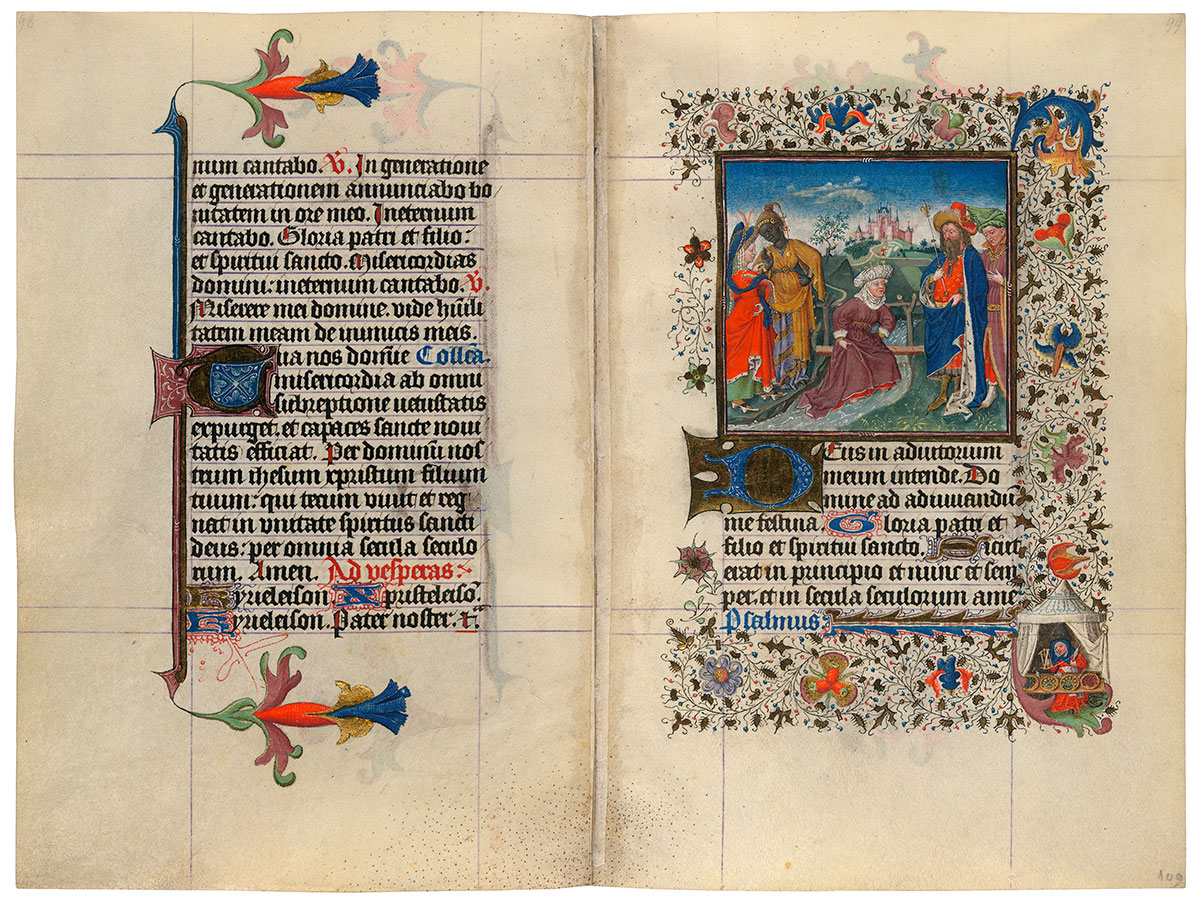
The Queen of Sheba Fording the Stream of Cedron
Purchased on the Belle da Costa Greene Fund with the assistance of the Fellows, 1963
Unsuitable for constructing the temple, the timber is employed as a lowly footbridge over the stream of Cedron. It is this footbridge that the Queen of Sheba must cross in order to pay a visit to Solomon. The queen, however, had a prophetic vision that the bridge would furnish the wood upon which Christ would be crucified. She therefore refuses to tread on the bridge and instead wades, as we see here, across the Cedron to reach the waiting king.
Hours and Masses for the Seven Days of the Week
The most unusual texts in Catherine's manuscript are the series of Hours and Masses for every day of the week. Medieval Christian tradition associated certain figures or themes with different days. Thus Sunday, the day of the Resurrection, was the Lord's Day; Thursday was connected with the Eucharist since that sacrament was instituted on Holy Thursday; and Monday was the day of the dead, since their torments were suspended on Sunday but recommenced the following day. In Catherine's prayer book, the themes for the Hours and Masses of the seven days of the week are:
| Sunday | the Trinity |
| Monday | the Dead |
| Tuesday | the Holy Spirit |
| Wednesday | All Saints |
| Thursday | the Blessed Sacrament |
| Friday | the Compassion of God |
| Saturday | the Virgin. |
Image courtesy of Faksimile Verlag Luzern
